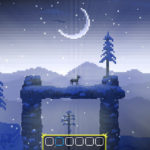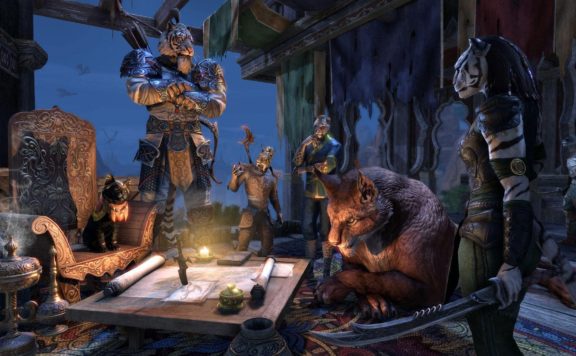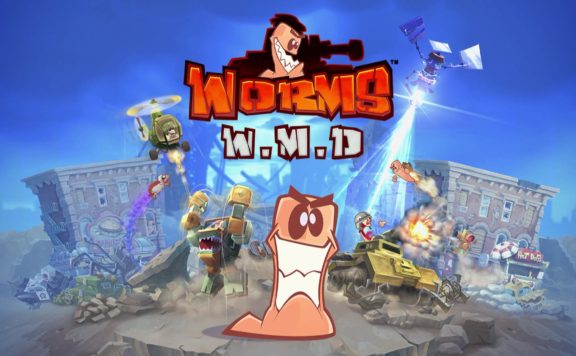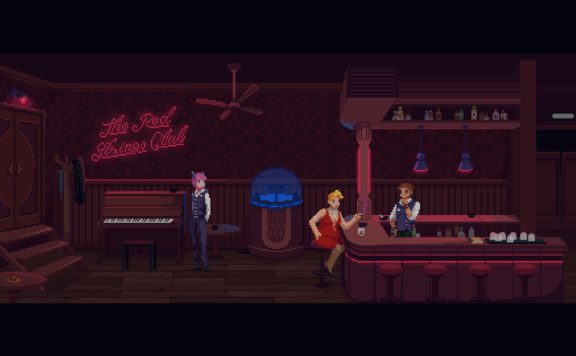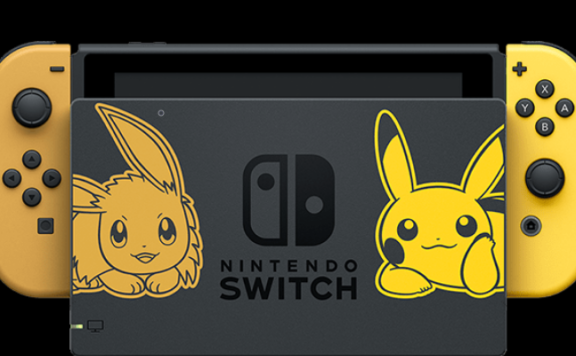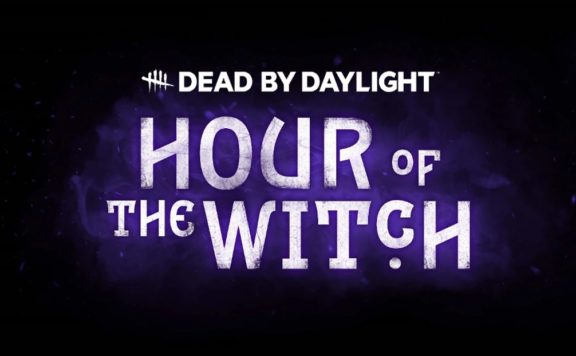Video games are often a power fantasy. You, the player, are put into the role of the hero or heroine with a special set of skills and powers, along with a mission, a hero’s journey. But, every once in a grand while, the oracles of game development hand us a scenario that breaks with convention to teach a lesson. This, my dear reader, is our The Deer God review for Nintendo Switch.
Like many indie titles finding their way to the Switch, The Deer God was originally released in 2015 and has since found its path to the aforementioned system in the Great Nindies Migration. So, what is The Deer God, how does it play on the Switch, and was it worth migrating?
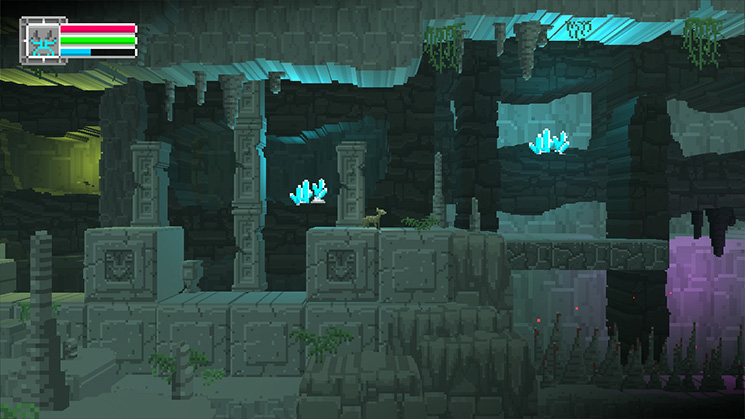 The Deer God takes an interesting narrative approach by setting you up as both the villain and potential hero of its story. You begin the game with a cutscene. Your character is out in the woods on a hunting trip with a good friend when you decide to stay up just a little bit later in hopes of dropping “The Big One” – which, my hunting friends tell me is something all hunters wish to bag and tag every year. While narrowing your sights on your prey, you are attacked by an angry pack of wolves AND struck by lightning. Isn’t nature neat?
The Deer God takes an interesting narrative approach by setting you up as both the villain and potential hero of its story. You begin the game with a cutscene. Your character is out in the woods on a hunting trip with a good friend when you decide to stay up just a little bit later in hopes of dropping “The Big One” – which, my hunting friends tell me is something all hunters wish to bag and tag every year. While narrowing your sights on your prey, you are attacked by an angry pack of wolves AND struck by lightning. Isn’t nature neat?
As you regain some form of consciousness, you appear before a magically majestic mystery stag… who also happens to have a female voice. My best guess at this point in the game is that this is the titular deer god. Whatever the case, you messed up big time, son! It’s time to pay the piper! However, in its benevolence, the deer god chooses to make you one of them – a yearling – in order to teach you the error of your ways. On this journey of self-rediscovery, you meet several sages who help you out by offering abilities to assist your success at deer life.
It is with this premise in mind that we get into the actual gameplay of The Deer God. After the narrative is set up, you are dropped into a procedurally generated, endless-runner-meets-Metroidvania world with, thinking like a Lutece from Bioshock, has constants and variables. There are always sages, as mentioned before, which grant you abilities, after completing tasks to prove your worthiness and there will always be people in need of help scattered throughout the world. One of the neatest things about this is that if you miss the objective, it will come around again – just keep running right and you’ll be golden… you literally can’t miss a quest.
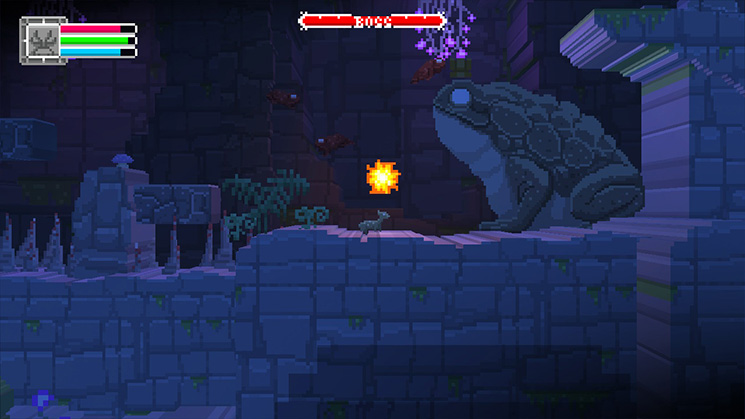 Throughout the world, you will manage three resource bars including health (red), energy (blue), and hunger (green). Energy is used when you attack or active a special ability, health is pretty self-explanatory, and hunger means a deer has got to eat! How authentic and neat is that for the deer experience? So, you best eat every apple and shrub you find because your health meter won’t like your deer when it’s hangry!
Throughout the world, you will manage three resource bars including health (red), energy (blue), and hunger (green). Energy is used when you attack or active a special ability, health is pretty self-explanatory, and hunger means a deer has got to eat! How authentic and neat is that for the deer experience? So, you best eat every apple and shrub you find because your health meter won’t like your deer when it’s hangry!
There are also a series of shrine hidden throughout the world which can endow you with super antler powers, but only if you can figure out their mysteries first. If you succeed, these statues will give you the ability to shot fire, freeze enemies with orbs of ice, or even call down lightning from the heavens – to name a few. Standard, everyday deer stuff, right? Unfortunately, a majority of these abilities are very expensive energy-wise and are wildly inaccurate. There are also items that you find along the way which offer a momentary buff to your gameplay. I found that I collected them far more than I used them… which, following my standard of procedure for most RPGs, I used one or two…
Aesthetically, The Deer God is has a lo-rez, 2.5-to-3D art style similar to Superbrothers: Sword & Sworcery. Even with this art direction, each of the biomes has a thematic beauty to them with an ambient soundtrack to match it. While there are moments of action throughout the game, this art direction is quite tranquil, for the most part.
 Mechanically speaking, the controls are fairly simple and function just fine on the Switch. You have your standard directional buttons, a jump button, a dash button (activated when the ability is unlocked), an action button, buttons to cycle through your actions, and a menu button. Within the menu, you can access a list of items and abilities that you can tag to an action bar, see quest information, and see your morality meter… that’s right: you have a morality meter.
Mechanically speaking, the controls are fairly simple and function just fine on the Switch. You have your standard directional buttons, a jump button, a dash button (activated when the ability is unlocked), an action button, buttons to cycle through your actions, and a menu button. Within the menu, you can access a list of items and abilities that you can tag to an action bar, see quest information, and see your morality meter… that’s right: you have a morality meter.
Let’s talk about that.
It is within the morality meter that the hypocrisy of The Deer God’s story lies. I know, I know – hypocrisy is a harsh word, but hear me out. Anyone who takes a principled stand on anything runs the risk of inconsistencies… and that is where the problem exists. The Deer God presents a world where deer are intrinsically good, making choices like killing MOST other deer or rabbits as bad. Yet, killing other creatures is good – even if they are not a natural predator of deer. This is, after all, how you both fill your “good” side and grow into a more powerful, adult deer.
 It’s a heavy-handed message that gives the illusion of choice while forcing your hand in the choices that you make. And if you choose to buck the system or accidentally cause the demise of “innocent” creatures and you die, you are harshly reprimanded by the deer god and reincarnated as something completely helpless. At its harshest, the messages of this game’s story is that you are a monster and the only right choice is to live as a deer and fight for deer supremacy. Even at the end of the game, if you choose to return to your humanity instead of becoming the deer god, the game takes a very dark turn, very quickly – further cementing this message.
It’s a heavy-handed message that gives the illusion of choice while forcing your hand in the choices that you make. And if you choose to buck the system or accidentally cause the demise of “innocent” creatures and you die, you are harshly reprimanded by the deer god and reincarnated as something completely helpless. At its harshest, the messages of this game’s story is that you are a monster and the only right choice is to live as a deer and fight for deer supremacy. Even at the end of the game, if you choose to return to your humanity instead of becoming the deer god, the game takes a very dark turn, very quickly – further cementing this message.
With all of this in mind, is The Deer God worth picking up on the Nintendo Switch? It is certainly a well-designed title that does provide enjoyable gameplay. Its tranquil aesthetic and procedurally-generated world make it a relaxing adventure to keep returning to. If you can look beyond the narrative or if you happen to share the game’s perspective, it’s a pretty neat romp and makes for a great portable title.
 Who knows, maybe they’re right. Maybe deer actually think this way and we are the monsters. Whatever the case is, I’ll take mine medium-well or in summer sausage form.
Who knows, maybe they’re right. Maybe deer actually think this way and we are the monsters. Whatever the case is, I’ll take mine medium-well or in summer sausage form.
Note: Our copy was reviewed on the Nintendo Switch with a code provided by PR.
COMPARE TO: Rogue Legacy, Bit.Trip Runner

